QUESTION: Do you know what the global coffee industry is valued at as of right now? Take a guess. Okay, we’ll tell you: a staggering $500 billion! Not only that, but the demand for coffee roasters is forecast to grow 6% through 2026!

If you fancy being among the 6%, then this article is for you. Perhaps you’re a coffee shop owner thirsting to roast in-house. Or a home roasting hobbyist looking to make the leap to coffee entrepreneur.
On those grounds, CoffeeRoast Co. presents the essential steps to starting a successful coffee roasting business. From the top...
1. DEVELOP YOUR COFFEE KNOW-HOW
Coffee Craft
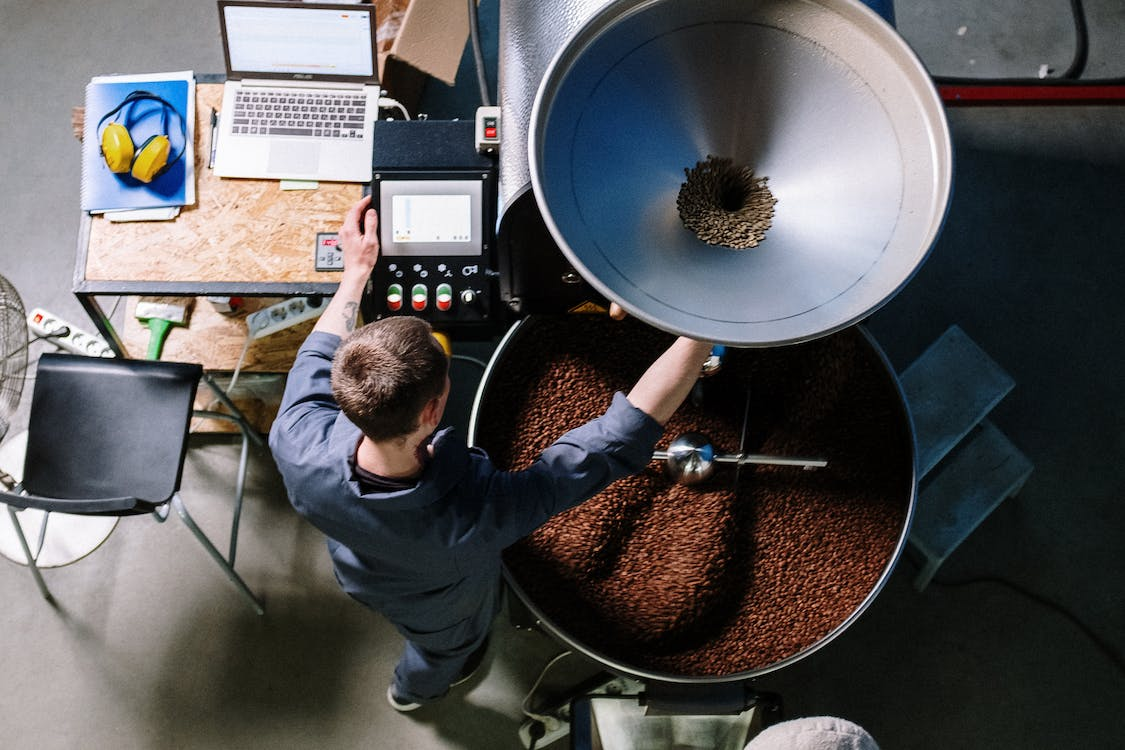
To become a coffee roaster, not surprisingly, you’ll need a solid grasp of all things coffee and at least one or two years experience.
Above all, to become proficient in the roasting process, methods, and techniques. But also to understand how to select the right green beans, different brewing styles, and tasting skills. One of the best things you can do in that respect is attend one or more professional courses or workshops.
In the U.S., both the Specialty Coffee Association [SCA] and Coffee Roasting Institute [CRI] offer a variety of educational resources geared toward becoming a roast master.
The SCA’s sensory skill module, in particular, covers recognising defects in green/roasted beans as well as discerning coffee characteristics such as acidity, body, and aftertaste.
Coffee Industry
Before launching a new roasting business, it’s imperative to carry out in-depth market research. In order to gain insights into who to sell your roasted beans to and how to sell them.
Not to mention, doing your thing differently or better, how to stand out from the crowd of other roasteries. Firstly, define your target customers; their needs and preferences. Then analyze your major competitors; their strengths and weaknesses.
Find your coffee roasting niche
After collecting the necessary data and information, the next stage is to figure out how to tread your own path as a professional roaster.
Ask yourself questions such as: How much will you charge for your roasted coffee? Will you stick to roasting single-origin beans or create blends? Will you sell to wholesalers, retailers, or individuals? Will you offer services like coffee subscriptions, training, or consultancy?
Keep a record of all the specifics as you’ll need them later.
Remember also that the coffee universe is ever-evolving. Tastes change. Techniques trend. Rivals pop up or close down. Because of this, you should continually finesse your roasting knowledge, skills, and experience.
At the same time as keeping up-to-date with developments in the industry and staying one jump ahead of competitors.
2. ESTABLISH YOUR COFFEE ROASTING BRAND
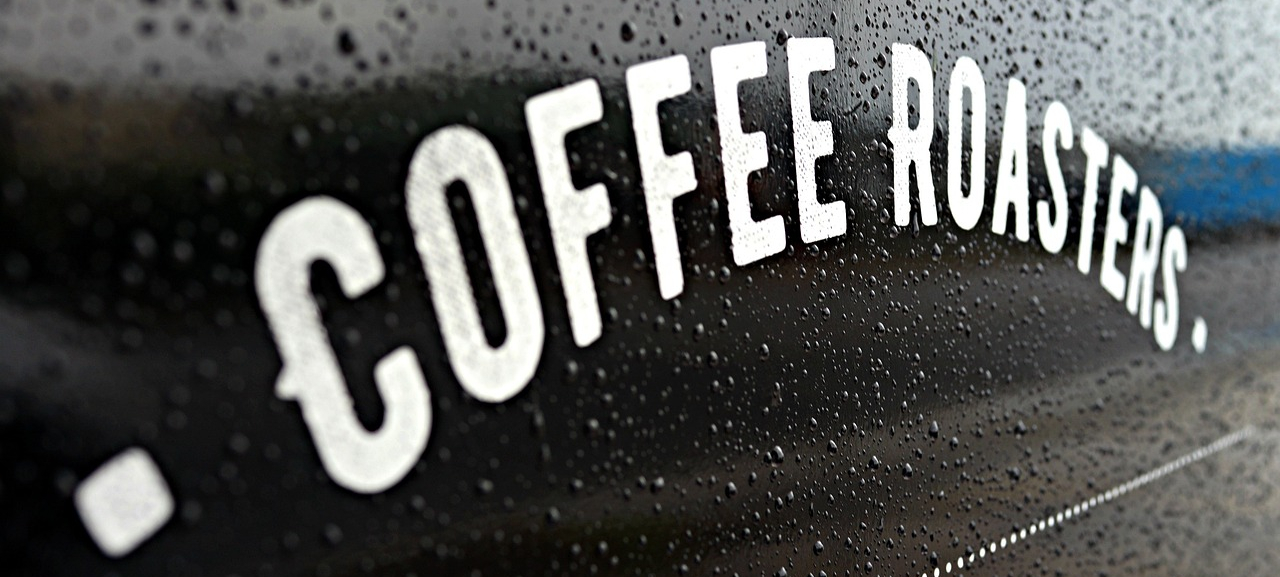
Unless you go down the route of a coffee roasting franchise, your roastery will need its own unique brand. One that’s instantly recognizable, memorable, and trustworthy.
At the same time as resonating with your target audience, and setting your business apart from the competition.
Brand identity specifically is the ‘face’ of your brand. It’s meant to shape the most positive impression of your roasting brand in the minds of your coffee-drinking customers.
That starts with deciding a brand name for your new coffee roasting company. Then, among other things, a logo, a tagline, your business’ core values and unique selling proposition, and your brand personality.
Take Florida's Koffee Kult specialty coffee roaster, for instance. Their name’s distinct and catchy. In keeping with which, their slogan ‘Be One of Us’ is more a message making folks who buy their roasts feel like they’re joining a coffee religion! Whether in words, pictures or both, your brand should be reflected in the roasted coffee products you sell and any services you offer.
From the design of the packaging for your roasted beans to that of the business cards for your roastery. And, the number one rule of branding, communicated consistently.
3. GATHER YOUR ROASTERY TOOLS & SUPPLIES
Exactly what inventory’s required depends on the size and scope of your roasting operation as well as your bank balance.
Here’s a round-up of the standard raw materials and hardware needed to roast coffee professionally:
Green Beans
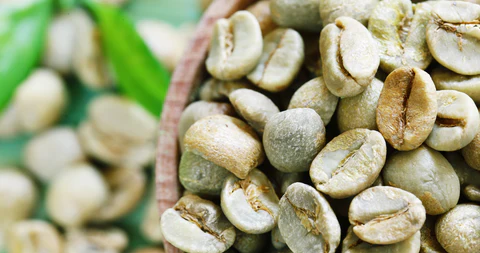
The kind of green coffee beans you choose will have a considerable impact on the characteristics of the final cup. Not to mention, on your bottom line.
Therefore, never skimp when shopping for unroasted beans. Plump for the freshest, highest quality ones you can afford. And ideally, those that are sustainably grown, organic, and ethically sourced.
Before buying green beans to roast and sell, decide which you’ll focus on. This means experimenting with beans from different coffee-producing areas, processing methods, and so on.
You want two or three reliable suppliers. Courtesy of specialty coffee shops, online vendors, importers, brokers, or by direct trade with farmers.
Coffee Roaster

The centerpiece of your roasting enterprise, coffee roasting machines come in all manner of types, sizes, prices, and levels of automation.
When starting out in the coffee game, there’s nothing wrong with using a countertop home roasting appliance. Save having to upgrade later though, smart to invest in a model that can scale with your business.
The go-to pick for commercial coffee outfits being drum roasters with a capacity of 2.2lbs and up. In addition, you may need to factor in installation and configuration of the unit by a qualified technician.
Other Gear
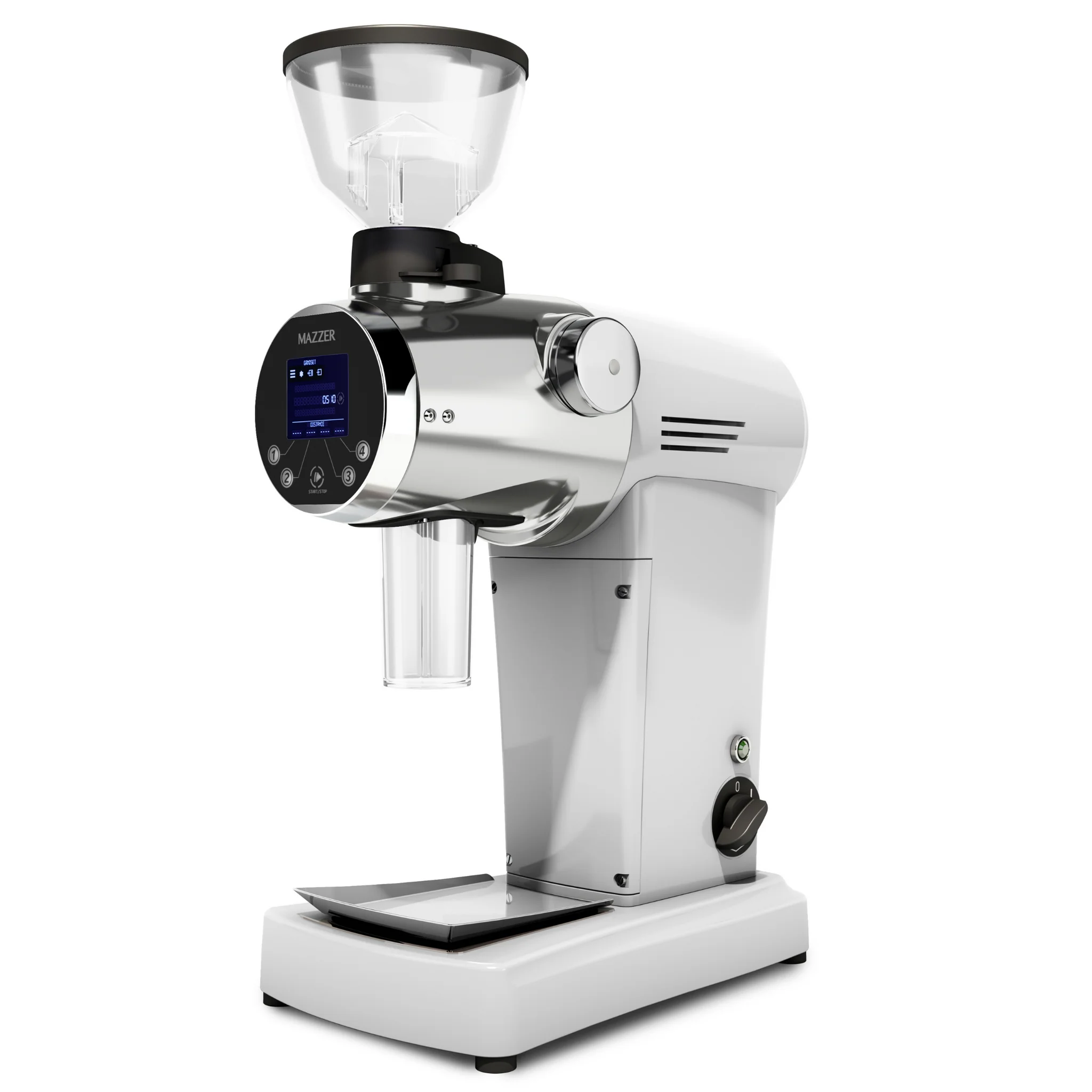
-
Roasting Software – For hooking up to compatible coffee roasters to help monitor production, planning, quality control, and other aspects with Artisan and Cropster popular picks.
-
Sample Roaster – For roasting smaller amounts of beans to judge the quality of your roasts before upsizing the batch.
-
Moisture Reader – For sensing the water content of beans (green coffee particularly) to provide clues as to how their quality might change over time and how they’ll react in the roaster.
-
Bean Probe – For sampling roasting beans so you can smell-check their aroma and, under a spotlight, view their shade by eye.
-
Color Meter – For finding out the true degree of roast to better help consistency of your roasts
-
Weighing Scales - For measuring out your green beans before roasting, ground coffee before taste testing, and roasted beans before packing.
-
Coffee Grinder – For grinding whole roasted beans to try out your roasts for use in regular coffees and/or espresso.
-
Coffee Maker – For checking the suitability of your roasts with different brewing methods.
Cleaning Materials
It’s vital to keep your roastery equipment in good and safe working order. Amongst the essentials, stuff like a wire brush to remove chaff and other debris. Specially formulated spray or powder to shift built-up coffee oils and other gunk. Plus a shop or industrial vacuum cleaner.
Safety Articles
Roasting coffee beans isn’t without its risks; smoke and fire, for two. Besides taking the proper precautions, always have on hand items such as a well-stocked first aid kit, fire extinguishers, gloves, and dust masks.
Storage, Packaging & Shipping Supplies
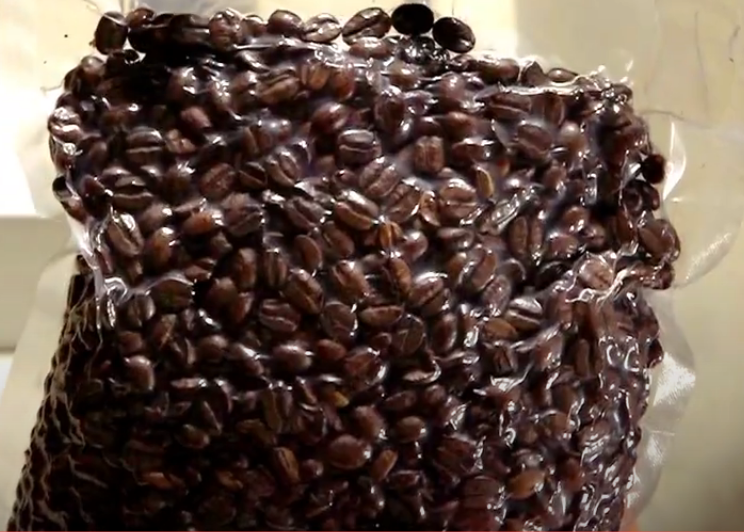
You’ll have to get hold of enough containers to store your beans. To stash green coffee, that usually means burlap sacks. For roasted beans, one-way valve packs while they degas and opaque airtight canisters for afterwards.
Kept that way in a cool, dark, dry spot, your precious coffee seeds will stay fresher and more flavorful for longer.
To mail out customer orders, you’ll need a bulk of bags; own branded and preferably recyclable. Something like bubble wrap or packing peanuts to protect your roasted coffee in transit.
A heat sealer to fasten the bags shut so the beans don’t degrade until opened. Besides which, delivery boxes, labels and pre-paid postage, for example.
4. SECURE A LOCATION FOR YOUR COFFEE ROASTERY
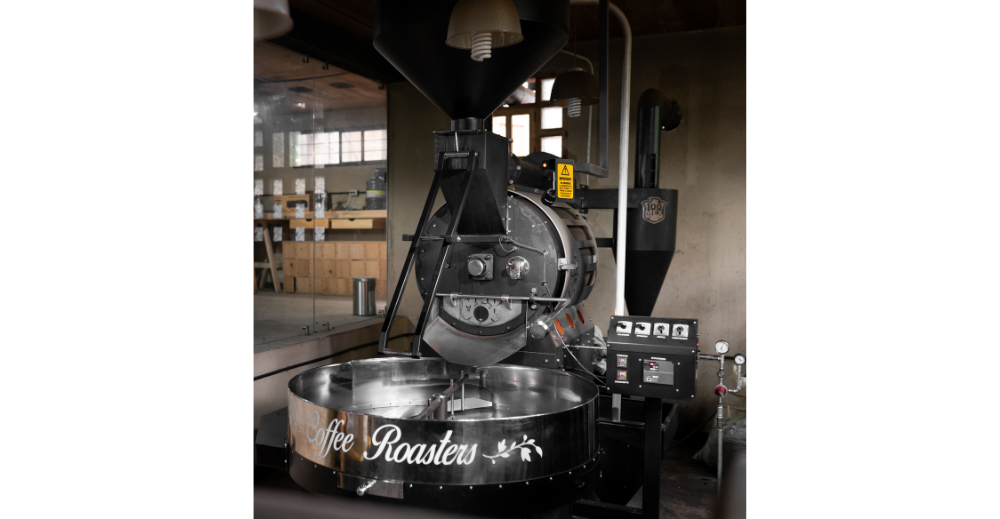
From wherever you run your coffee roasting business, of course, it needs to be big enough to comfortably accommodate your entire roastery setup. With adequate room to properly store your beans (roasted and unroasted) and to roast, grind, brew, and pack. Not forgetting office space for admin tasks.
Provided it ticks all the boxes, early on to help keep costs down, you might consider operating from home. Indeed, many a pro coffee roaster got their start there, in a basement or garage.
As your roastery business grows though, and especially if you need to onboard staff, chances are you’ll need to lease (or purchase) commercial premises. Be it a storefront or a warehouse facility.
5. ARRANGE PERMITS & LICENSES FOR YOUR ROASTING BUSINESS
Not the most exciting nor the speediest aspect of having your own coffee roasting business. To operate legally though, it’s crucial to come by the required paperwork and comply with health and safety laws and regulations. Otherwise, you risk a hefty fine or your roastery shuttered for good.
Precisely which licenses and permits you’ll need will mean checking with local, state, and federal authorities. Here’s the more common ones:
-
EPA Air Permit – Issued by the Environmental Protection Agency where roasters roast more than 1 million pounds of green beans per year.
-
FDA Registration – Certain food facilities must register with the Food and Drug Administration then undergo regular random inspections by the local health department.
-
General Business License – One-size-fits-all document that gives permission to operate a business.
-
Legal Entity Setup – To establish the name of the business and its structure/form (sole proprietorship, partnership, corporation, or Limited Liability Company [LLC]).
-
Employer Identification Number – When recruiting employees and reporting employment taxes, apply for a unique EIN from the IRS.
-
Seller's Permit - Authorization to collect sales tax from customer transactions before remitting to the appropriate taxing authority.
-
Resale Certificate – Exempts the holder from paying sales tax on goods purchased from another business to be resold.
-
Certificate of Occupancy – Being granted a CO ensures the commercial building conforms with zoning and building codes.
Obtain Business Insurance
Often compulsory, getting properly insured safeguards against claims arising from your coffee roasting business.
There are several sorts of plans and levels of cover:
-
General Liability – All-round coverage for personal injury, property damage, and more.
-
Commercial/Business Property - Protects company premises and its contents in case of loss or damage.
-
Business Owner's Policy [BOP] – General liability plus business property insurances bundled into one.
-
Equipment Breakdown – Provides for replacing or repairing work machinery.
-
Workers' Compensation – Medical and salary benefits for employees/staff sick or hurt on the job.
Fair Trade Certification
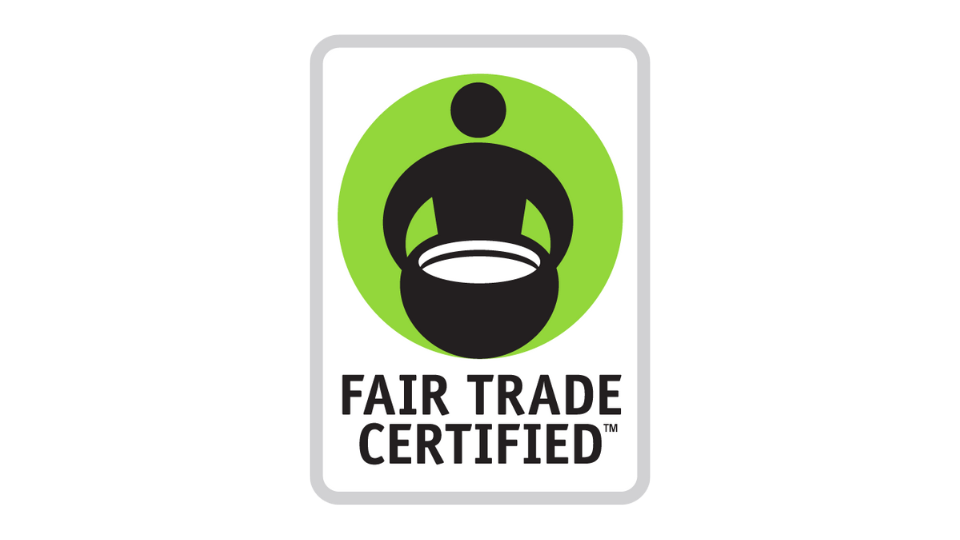
As a roastery business, it’s worth looking at getting Fair Trade Certified.
Roasted beans that meet Fairtrade Standards can demonstrate your commitment to a fair wage and treatment for coffee producers. Quite apart from the chance to earn greater returns and customer support in the long term.
Just bear in mind that to qualify, your roasting outfit will be subject to supply chain audits and you’ll pay a premium for Fair Trade coffee beans.
6. COSTING & FUNDING YOUR NEW COFFEE ROASTING START-UP
Calculate Startup Costs
To open your own coffee roastery may not be as costly as that of, say, a café but you’ll still need a chunk of capital.
The initial lay out for a coffee roasting start-up varies widely. Ranging anywhere between $10,000 and $150,000 with the average investment in the ballpark of $50,000.
Running through the basic upfront spends:
-
Coffee Roasting Machine – Generally your single biggest expense, roasters drop from a couple hundred bucks for a decent home roaster to tens of thousands for monster-sized commercial-grade equipment.
Added to which, possible installation, maintenance, and servicing costs. And not counting the cost to fuel the roaster, be it by electric, propane, or firewood. -
Green Coffee – Depending on the quality and variety, bulk-bought raw beans go from $1 to $15 per pound. Prices change from month to month, but $3 to $4.50 is typical. Also note that whilst you perfect your roasts, expect a good amount of wastage.
-
Physical Space - Roasting professionally from home, you can suppose your mains water and power utility bills will go up. Having a commercial roastery will entail paying rent or taking out a mortgage; either way, you can safely assume you’ll have to put down a sizeable deposit.
Whether running your roasting business from home or otherwise, you may also need to sink money into construction or renovations. -
Employee Pay – Likely as not, you’ll handle much if not all of the legwork yourself when you first get going in the roasting business. As you expand though, be prepared to take additional labor costs into account.
-
Marketing – To broadcast your coffee roasting business to the world, you’ll need to reserve a budget for branding and advertising.
-
Documentation – Although the costs differ massively, reckon on regulatory fees for licensing and permitting. And extra for insurances policies, certificates, company registration and the like.
Raise Startup Costs
If you don’t have savings, assets to sell or simply unwilling to self-fund, you’ll need to finance your coffee roasting business by other means:
-
Bank Loan – The norm, though receiving the green light will call for a comprehensive business plan and a sound credit history.
-
SBA Loan – Borrowing from a third-party lender with the line of credit backed by the Small Business Administration.
-
Government Grant - Federal financial assistance programs for sponsoring ideas and projects.
-
Venture Capital – A VC firm contributes funds in exchange for an ownership stake in the new business.
-
Crowdfunding – From average Joes and Janes to angel investors donating to the fundraiser’s cause.
-
Family & Friends – Requesting monetary support from loved ones.
7. HATCH YOUR COFFEE ROASTING BUSINESS PLAN
No self-respecting entrepreneur would go into commerce without a well-laid business plan. Sure, it takes a bit of time to put together, but it serves to map out your new coffee roasting venture.
In point of fact, if you’re hoping to score big bucks in startup funding for your roastery, odds-on you won’t get it without a killer business plan.
These are the basics of what should appear in a business plan:
-
Executive Summary – A short overview, written last, of the key points in your roastery business plan.
-
Company Description – Detail your coffee business’ vision, mission statement, goals/objectives, performance measures, and such like.
-
Products & Services - Catalog which roasted coffee products you’ll offer, plus any subscription or related services.
-
Business Structure – Outline the ownership of your roasting company, as well as how it will be organized and managed.
-
Employee/Staffing Requirements - Describe your roastery’s hiring needs including how many workers (contract, salaried, or otherwise), what positions, and any training.
-
Market Analysis – Break down your business’ target audience and main competitors.
-
Sales & Marketing Strategies – List advertising campaigns to attract customers to your roasting business and merchandising initiatives to help sell your roasted beans.
-
Financial Outlook - Sketch out 6+ months of sales projections, a break-even analysis, startup and running costs, profit and loss estimates, and whatnot.
8. GET YOUR COFFEE ROASTING BUSINESS ONLINE
Nowadays, building a presence on the Net for any business is crucial for a host of reasons. Not least to showcase your brand, educate with coffee roasting content, as well as engage with customers new and old.
Most of all, as a pro roaster, you’ll be able to sell your roasted beans online together with breaking into international markets.
Set Up Your Coffee Roasting Company Website
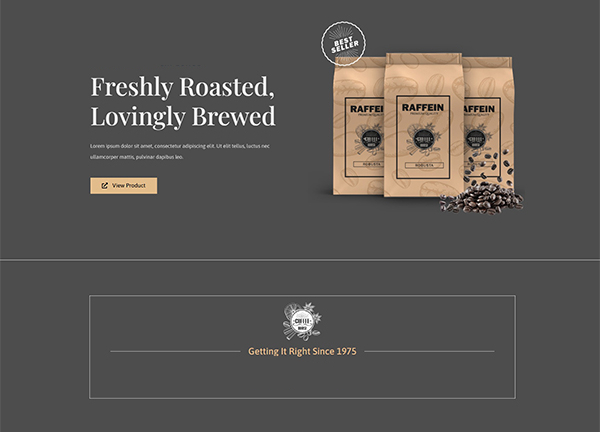
Versus commissioning a web designer and developer if you’re tech shy or on a strict budget, DIYing a basic website has become reasonably straightforward. Granted, creating an e-commerce store for the sake of selling is somewhat more complex, expensive, and time consuming.
Before anything, you’ll need to register a domain name. Really, one matching the name of your roasting business. Next, sign up for web hosting. After that, set up a website builder.
The most popular being WordPress, Weebly, WIX, Squarespace, and Shopify. Then, based on your earlier market research, it’s a matter of designing, developing, optimizing, and deploying your site.
Leverage Social Media
Completely free or pretty economical, you’d be missing a serious trick if your up-and-coming roastery wasn’t on social media. Among the biggest platforms are Facebook, LinkedIn, Instagram, Pinterest, X (formerly Twitter), YouTube, and TikTok.
With more emphasis on real-time interaction, you can tap into a fan base of new coffee-loving prospects.
Lots of different types of content can be shared on social media – short text posts, infographics, articles, photos (pre-recorded and live streams), testimonials, webinars, quizzes and polls, contests and free tries, special deals, and teasers and announcements.
What’s more, it’s a breeze to set up a shop on each of Facebook and Instagram for selling your roasted coffee.
Just don’t forget to link your various social media channels to your website.
9. SHOUT OUT YOUR COFFEE ROASTERY
You can have the best coffee roasting business on the planet but if no-one knows about it, you won’t go far. Even then, there are countless other roasteries out there vying for custom. Precisely why you need to do everything you can to put your roasted beans in front of folks.
Marketing efforts normally take a while to gain traction. So, in the interests of raising brand awareness and building an audience, begin hyping your brand sooner rather than later. Get people excited, drum up interest, and maybe pre-orders. Followed by full-on promotion after launching to expand the reach of your roastery business and drive sales.
These days, most coffee roasters get the word out by using a combination of modern-day online marketing and good old-fashioned advertising and PR:
Internet Marketing
Done right, digital marketing can work miracles for plugging your coffee roasting brand on the web.
To highlight a mere handful of types:
-
Content Marketing & SEO – Create, publish, and share blogs, videos, posts, podcasts, and other material online; often used in conjunction with Search Engine Optimization.
-
Pay-Per-Click Marketing - Advertise online and pay for each click a PPC ad receives.
-
Social Media Marketing – Not least influencer marketing to collaborate with SM users who have substantial followings.
-
Email Marketing – Send promotional messages and newsletters to subscribers.
-
Business Listings – Register your roastery on the likes of Google Business Profile, Yelp, and LinkedIn as a simple, zero-cost, and underrated way to increase the visibility of your roasting business.
Traditional Marketing
Online marketing may have upstaged more conventional advertising but it still has its merits.
Some ideas to boost publicity and connect with new customers the old-school way:
-
Signage – If you’ll have a retail outlet for your roasted beans, put up signs there to grab the attention of passersby.
-
Promos – Spark interest by offering loyalty programs, discount vouchers, prize-winning competitions, or complimentary samples of your roasted coffee as giveaways.
-
Flyering – Hang, hand out, or door-drop leaflets throughout your local community, especially in areas with high foot traffic.
-
In-Person Sales – Pitch your roasts at farmers’ market, trade shows, conventions, and similar events; besides looking for partnership opportunities with grocers, restaurants, and caterers.
-
Cuppings – Host free coffee tastings at your roastery or elsewhere around town.
THAT'S A WRAP
Launching a coffee roasting business is a golden opportunity for those with a passion for java and an entrepreneurial spirit.
In fact, knowing your craft as well as choosing the right beans and roasting machine is half the battle. The rest is a question of getting business savvy.
Most notably, carving out a niche and a brand for your roastery, satisfying health and safety regulations, plus crunching the numbers. Then, before lift-off, to begin marketing your roasted bombshells to the world.
If you’ve ever started a coffee roasting business, feel free to weigh in with any lessons learned in the comments box underneath.
Otherwise, as the heart of your future roasting empire, how about checking out our collection of commercial drum roasters.

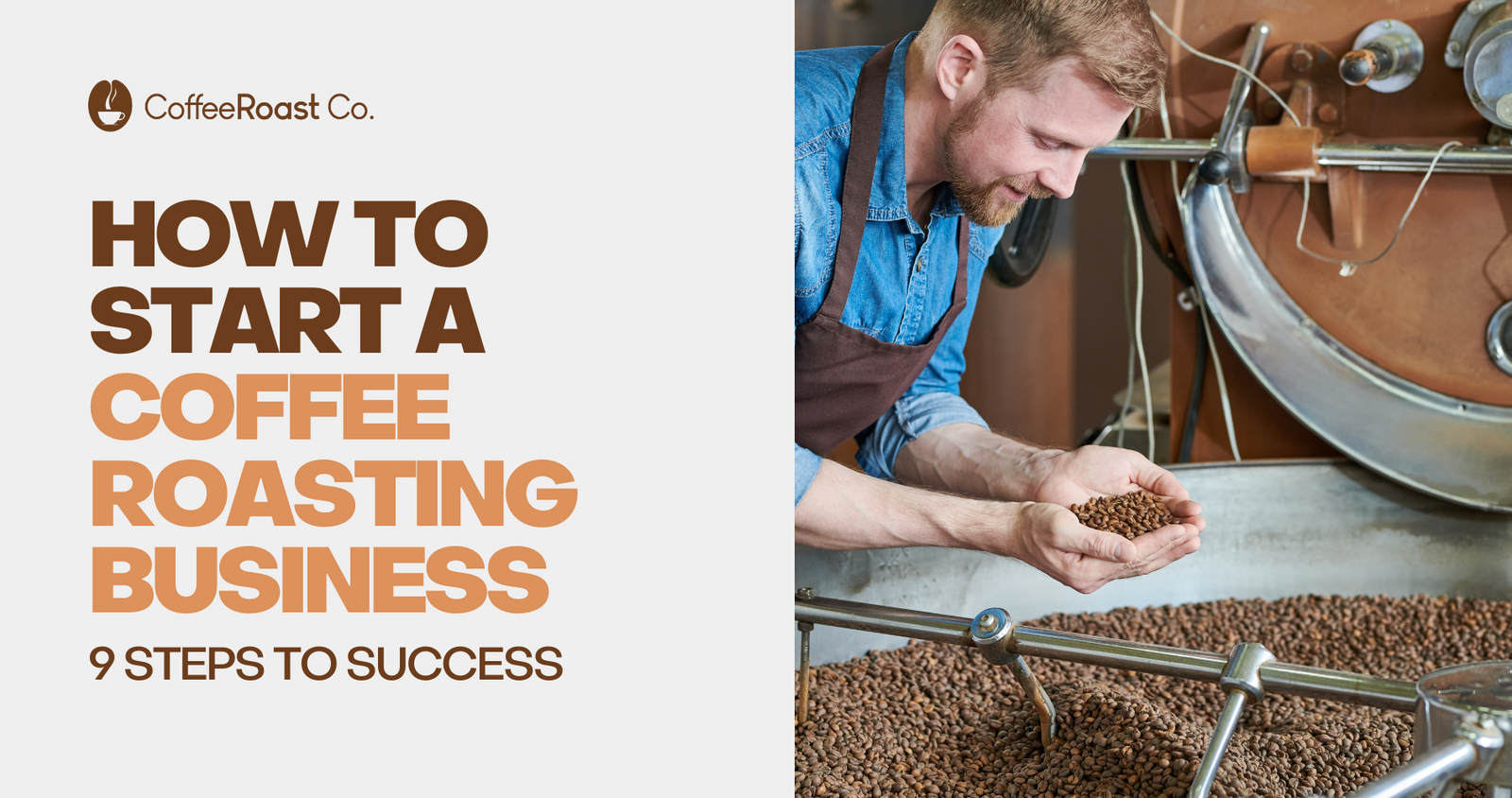



Brian
June 07, 2024
Thank you for this article. This is exactly what I need to pursue roasting as a potential start up.